On Gold Mountain Read online
Page 49
“What my father doesn’t understand is that turning any of these things over for a profit can be a real plus,” says Leslee, who, after a long hiatus, has resumed the business of renting props to movie and television companies, for such films as The Joy Luck Club and The Shadow, and TV series including “Murder She Wrote” and “The Young and the Restless.” “The family has just been so afraid to let it go, but I don’t know where they thought they were going to take it.” My advice, though perhaps unwanted, is that she should go back to the old ways and hang a sign in the window: “Ten Thousand Customers Coming Through the Gate!”
The happiest endings are new beginnings. Fong See—a peasant boy from a tiny village in the south of China—created a family that flourished in America. In the See family, Ray’s daughter, Pollyanne, had three children. The two girls—an interior designer and a bookkeeper—have yet to marry; their brother is the CFO of a company, and father of a girl and a boy. Bennie’s daughters, Marcia and Shirley, each married and had children. Marcia, a teacher, has taught her daughters that they too can combine work and motherhood: Heather, an engineer, has two young children; her sister, Gale, is a microbiologist with three children. Shirley had three children: Donna, who is a doctor’s assistant, and Robert and Kenneth, who work in the family-owned printing business. Among them, they have given Shirley and her husband seven grandchildren. Sissee and Gilbert’s daughter, Leslee, has two beautiful girls, Sian and Mara. Stella and Eddy had Richard, the only son in the third generation of the See family. He, in turn, produced daughters: my half-sister, Ariana, who just graduated from college with a business degree, and me. My sons, Alexander and Christopher, are thirteen and ten.
In my greatgrandfather’s second family, all three of the girls married, but only the eldest of the four sons married. In Taiwan, Jong Oy died of cancer in the early 1980s. One of her sons lives in Georgia, where he is a veterinarian. He and his wife gave Ngon Hung her first great-granddaughter. Jong Oy’s other son has a doctorate in aeronautical engineering and has worked for NASA. He and his wife recently gave up their jobs to go back to Taiwan as missionaries.
The second Fong sister, May Oy, is a researcher. One of her daughters works in a library; the other works in the media. The youngest Fong sister, Sumoy, is still beautiful and adored. She is the principal of a multiethnic, multicultural school in Los Angeles where upwards of thirty languages are spoken. Her son, Robert, is a CPA and is married to a Japanese American woman. They have a three-year-old son, Austin, and a set of newborn twin boys, Brady and Tanner. Robert’s brother, Tyler, is an insurance consultant, and he and his wife have a little girl, Stephanie.
Three of the Fong brothers—Chuen, Yun, and Gary—work at the F. See On Company on Chungking Court in New Chinatown. When their brother Ronny died two years ago, just days short of reaching his fiftieth birthday, Yun, in his early sixties, moved out of his mother’s house and into Ronny’s place. Yun is living on his own for the first time in his life, and loving it. Gary still resides with his mother, and has taken over Ronny’s stamp collection.
Chuen and Teruko had four children, two daughters and two sons. Mari is a representative for a pharmaceutical company. She has two little girls, Jade and Shannon. Mari’s sister, Sumi, sells computer software; her son, Ian, just turned two. One of Chuen and Teruko’s sons died, leaving only Sean to carry on the Fong line. Sean has just entered college, where he is studying graphic art.
Finally there is Ngon Hung, now in her eighties and still living in Chinatown. It took her years after Fong See’s death before she felt comfortable venturing out, making friends and joining the Chinese Women’s Club. But with each step she took, her back straightened until, by now, she looks younger than when she was a shuffling, hunched woman locked in servitude. She divides her time between watching Chinese vieotapes on her big-screen television set and going on junkets with many of Chinatown’s other senior citizens to Las Vegas. Her family reports that she is an inveterate gambler who always wins.
*
In a culture where only the eldest son has value, it is by default the role of the younger brother to stumble his way through life. This role was certainly assumed by Fong Yun, whose attempts at business were usually marked by failure. But with Fong See’s death, Fong Yun, the oldest living “younger” brother, suddenly catapulted into the position of elder statesman of the family and of Chinatown.
In 1970, Los Angeles Times columnist Jack Smith interviewed Fong Yun in his shop in New Chinatown. Smith found Uncle painting a carved wooden figure in the back room of the store. To Smith, Fong Yun looked ancient, as indeed he was. Yun recalled his life in the City of Angels with good humor. When asked about the devastating first fire in China City, he said, “Oh, I lose everything,” and laughed heartily. Later Smith asked Fong Yun his age. “How old?” Yun repeated, considering. “Not very old. Ninety-seven?” Then he laughed again. “Okay. Ninety-eight. Not old.”
Surrounded by his large family, Fong Yun lived to paint a few more screens, repair a few more figurines, entertain a few more customers, and travel to Hong Kong to see his eldest daughter from his concubine. He died a wealthy man in spirit and family, and a very wealthy man by the standards of Dimtao. He made sure that his concubine and children in China were provided for, leaving them two houses in Fatsan, a home in Dimtao, and a modest yearly stipend that continues to this day.
Fong Yun also left a family of eight children in Los Angeles, each of whom has only kind words to say about him, for if Fong See was the brains of the family, in many ways Fong Yun was the loving heart. After Kuen, Yun’s eldest son, closed his restaurant, he opened an antique store in Hollywood. Kuen is retired now and living in the Silverlake area of the city. He has six sons—including a lawyer, an architect, an accountant, an engineer, and an artist. They, in turn, have married and given Kuen and his wife eight grandchildren at the time of this writing.
Fong Yun’s second son, Danny Ho, became the first multimillionaire in his family, with his huge rattan manufacturing company. He died in 1992, leaving behind two sons—who have taken over the business—and a daughter. Haw, Fong Yun’s third son, became a tool designer; his sons are a lawyer and an engineer. Uncle’s fourth son, Chong, became an engineer; his three children are either in or about to enter college.
Uncle’s youngest son, Gim, is the only one in his family still in the antique business. He runs Fong’s, the store in New Chinatown that he started with his siblings in the 1950s, and does cloisonné work in his spare time. He married the daughter of the pastor of the Methodist Church, and their two daughters are a bank executive and a CPA. One of the girls just gave Gim his first grandson.
Gim’s sister, Choey Lau, has spent her married life in Hawaii. Her three sons have grown up to be a lawyer, doctor, and businessman. Lau’s sister, Choey Lon, became a fashion designer. Several years ago, Lon, who used to pretend she was Snow White, living in the castle of China City, materialized her fantasy in a penthouse apartment that replicated the fairy-tale princess’s mausoleum in the forest, right down to a pair of bronze deer. The execution of this vision was so complete that it appeared on the cover of Architectural Digest. Lon never married, and today lives just blocks away from Chinatown, in a high-rise condominium complex.
Concerning others who have peopled these pages:
After his wife’s death, Harvey Copeland, Stella’s father, stopped drinking, got off Skid Row, and began living a quiet life in a boardinghouse. He adopted a cat to keep him company. After so many years of shirking responsibility, he took his pet-owning duties very seriously. In late 1957 he was hit by a car while crossing the street to the butcher shop to pick up fresh meat to give his cat.
Sadly, just as Harvey had begun cleaning up his life, his son, Ted, who was a barber like his father, began to sink into a life of alcoholism and barroom brawls. In the early seventies, Ted died from cirrhosis of the liver. His twin daughters, Lynn and Gwynn, have six children between them.
Peter, the son of the mysterious Fong
Lai, still works for Chuen and Yun in the F. See On Company. Peter is considered a family member, and as such is always seated at an important table at banquets. Mary Louie, who started working in the F. Suie One Company during the influenza epidemic of 1918, and her sister, Dill, are in their nineties, in perfect health, and share an apartment in Hollywood.
In the late fifties, Tyrus Wong began designing Asian-themed Christmas cards for Hallmark in his free time. When he retired from Warner Brothers, his wife Ruth got so sick of having him around the house that one day she said, “Why don’t you go fly a kite?” Today Tyrus, now in his eighties, uses his meticulous craftmanship to build and paint centipede kites up to two hundred feet long, which he flies on Venice Beach. He is very spry, and still loves to tell stories.
Fong See was an unquestionably unique man who rose above, ignored, and finagled his way around discriminatory laws. The majority of Chinese immigrants were not so lucky. Still, these faceless men and women were hardworking, resilient, and persistent. These characteristics helped to fuel their ambition, their hope for the future, and their desire to better their lives and those of their children—all those things that have inspired would-be Americans since the Pilgrims landed at Plymouth Rock.
Statistics on the numbers of Chinese immigrants to this country, as well as the number of Chinese Americans already living here, are, as ever, malleable and unreliable. The People’s Republic of China estimates that the diaspora of Chinese totals about fifty million. This figure includes the twenty million Chinese living in Taiwan, who are Chinese but not Communist. It also embraces those Chinese living in Macao and Hong Kong. Although the figure is not precise, it can be said that the diaspora was so immense that it brings to mind certain clichés: that the Chinese can be found in any corner of the globe, that there isn’t a country in the world where you can’t get a decent Chinese meal.
This book has concentrated on those Chinese who came to America. Between 1950 and 1960, through immigration and births, the Chinese American population in the United States increased from 117,629 to 237,292. Already this was a tremendous increase from the mere 78,000 at the beginning of World War II. But the passage of the Immigration and Nationality Act Amendments of 1965, which repealed the old national-origins quota system, irrevocably changed the pattern of immigration. Although the new law still favored immigrants from the West, it did allow the entry of twenty thousand Chinese each year. Following the trend established with the War Brides Act, the emphasis was on family reunification, followed by a preference for highly educated, highly skilled professionals.
In 1976, the immigration laws were amended again to remove the inequities between the eastern-and western-hemisphere limitations; limits were now maintained at twenty thousand per country. (Those seeking family reunification and those with special skills were still preferred, however, and were treated on a first-come, first-served basis.) With these new laws, the Chinese American population exploded, doubling each decade. Between 1965 and 1984 the number of Chinese immigrants jumped to 419,373—a number that almost matches the 426,000 Chinese who came to the United States between 1849 and 1930.
In 1990, according to the U.S. Census Bureau and the LEAP Asian Pacific American Public Policy Institute, Asian Pacific Americans—comprising immigrants from thirty different ethnic groups, including those from Vietnam, Korea, Sri Lanka, Japan, Fiji, and the Philippines—are just 2.9 percent of the U. S. population. Chinese Americans total 1,656,472; sixty-three percent of that number are foreign-born. Like the numbers put forth by the PRC, these, too, must be looked at with care. How did people classify themselves? How much Chinese blood defined them as Chinese rather than Caucasian or “Other”? One half? One-quarter? One-sixteenth? Did people call themselves Chinese only if they were full-blooded?
Amazingly, not even during the years of the worst persecution have Chinese Americans ever exceeded one percent of the total U.S. population; in 1985 they stood at only .42 percent. Despite this small number, contributions of Chinese sojourners and Chinese Americans can be found across the country and in every field of endeavor. Going back to the earliest days of the Chinese in California are the tough men who hacked and burrowed their way across and through the Sierras to construct the transcontinental railway. Many of those laborers went on to reclaim the land of the Sacramento Delta—even today some of the richest agricultural land in the entire country.
These, as well as other contributions, are taken for granted. Almost anywhere a person goes in the western United States, he will find not only those ubiquitous Chinese restaurants but also forgotten places—China Wall, China Gulch, China Creek, China Camp. Some of these names recall backbreaking work—a wall built to hold back a raging river, or a shelf carved out of the side of a mountain to support a railroad right-of-way. Others represent the abandoned sites of enclaves on the outskirts of towns, in scrub canyons, and along small creeks where the Chinese found safety and respite from the larger white population.
In 1994, as this book is being written, the diaspora continues. Based on recent trends, the combined Asian Pacific population in the United States will grow from today’s 7.3 million to 20 to 23 million by the year 2020. In California this group will increase from 2.85 million in 1990 to as high as 8.5 million in 2020. Many of those people are having experiences strikingly similar to those of Fong Dun Shung and other early immigrants. Today thousands of Chinese pay up to thirty thousand dollars per person to smugglers who pack them aboard barely seaworthy vessels—without toilets and with little sustenance—and hope for the best. Often these ships drift for weeks without power, or languish two hundred miles offshore, beyond U.S. coastal waters, under the constant, wary eyes of the Coast Guard.
If the immigrants are fortunate enough to land unobserved, they, like their great-grandparents before them, must work hard—in laundries and restaurants, in garment factories and electronics assembly plants, as prostitutes and drug runners—to pay back their debt to the smuggling ring. If they are caught trying to land, the immigrants can apply for refuge on the basis of participation in the Tiananmen Square uprising or objection to China’s one-child-per-couple policy. But these new immigrants (all immigrants, actually) aren’t welcome. In Sacramento alone, twenty-one anti-immigration bills—most of them unconstitutional if enacted—are currently under consideration. The purpose of these bills, like those of the nineteenth century, is to stigmatize immigrants as “detriments, parasites, even criminals.” And, just as in the old days, elections are won and lost on the issue of immigration. In 1994, California’s governor, Pete Wilson, campaigned on this platform. Through Proposition 187, illegal immigrants would be barred from receiving any state funds; this meant no education, no welfare, and no medical care, except in dire emergencies. Wilson and the proposition won by large margins. The day after the election, several groups went to federal court seeking to block the new law as being unconstitutional, while in Washington, D.C., Congressman Newt Gingrich suggested that Proposition 187 be adopted nationally. The early court challenges were successful; the cases are now proceeding through the courts of appeals.
Even without Governor Wilson’s proposed “reforms,” conditions for new immigrants are almost as bad as they were in the 1880s. In New York Chinatown—the largest Chinese enclave in the country, in which sixty-five percent of the inhabitants reportedly have limited or no English—the median income is nine thousand dollars a year. In San Francisco Chinatown, the country’s second largest Chinese community, annual earnings are slightly higher, at eleven thousand dollars a year. In addition to poor wages, these immigrants lack affordable health care and housing. Nationwide, one-fifth of all Chinese American housing is overcrowded. In San Francisco Chinatown, the population density is 228 per acre, the second highest in the nation after some parts of Manhattan. Over half of the housing is considered “old, deteriorated, and substandard.”
Today, single men can still be found sharing eight-by-eight-foot rooms and sleeping in bunk beds stacked from floor to ceiling. Bathrooms a
nd kitchens are shared by several families. Immigrants—children and adults—can expect to hear racial epithets, have food thrown at them, get beaten up, and be made fun of. And, just as in the old days, these immigrants are usually too afraid or too bewildered to complain.
But what about the “model minority”? What about all those Chinese American doctors, lawyers, engineers, and mathematicians? They’re certainly out there. For every Chinese American who makes less than ten thousand dollars a year, there’s another who earns more than seventy-five thousand dollars. According to the 1990 Census, Asian Pacific Americans are highly educated relative to the general population, with thirty-seven percent of those twenty-five years of age and older having a bachelor’s degree, and fourteen percent having a graduate or professional degree. Nearly a quarter of all doctors, nurses, and medical technicians in New York, Los Angeles, San Francisco, and Chicago are Asian Pacific Americans. Over ten percent of all doctors across the United States are of Asian Pacific backgrounds, while in business, entrepreneurs have increased tenfold in the last decade.
But remember, Asian Pacific Americans constitute only 0.4 percent of the seats on the boards of directors among the Fortune 1000 companies. In California, where Asians make up ten percent of the electorate, there hasn’t been an Asian in the state legislature for eleven years. Asians are 3 percent of the national population, but they make up less than one percent in the House of Representatives. In the newsrooms of daily newspapers across the country, Asian Pacific Americans comprise only 1.5 percent of the work force.

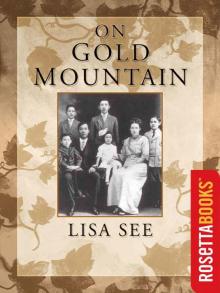 On Gold Mountain: The One-Hundred-Year Odyssey of My Chinese-American Family
On Gold Mountain: The One-Hundred-Year Odyssey of My Chinese-American Family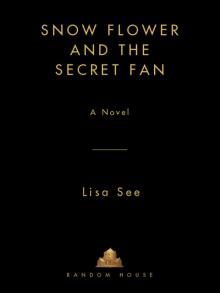 Snow Flower and the Secret Fan
Snow Flower and the Secret Fan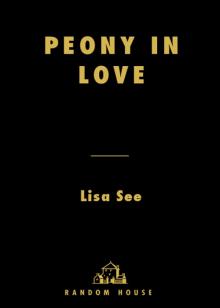 Peony in Love
Peony in Love Flower Net
Flower Net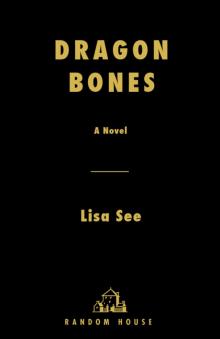 Dragon Bones
Dragon Bones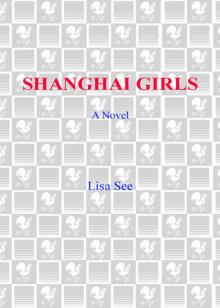 Shanghai Girls
Shanghai Girls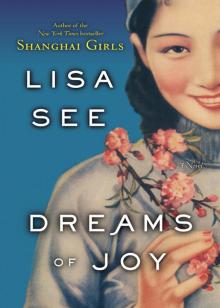 Dreams of Joy
Dreams of Joy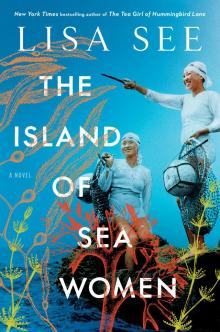 The Island of Sea Women
The Island of Sea Women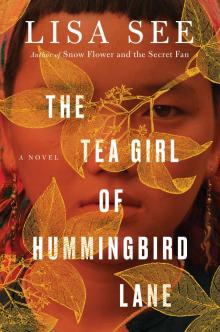 The Tea Girl of Hummingbird Lane
The Tea Girl of Hummingbird Lane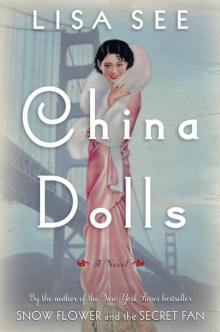 China Dolls
China Dolls The Interior
The Interior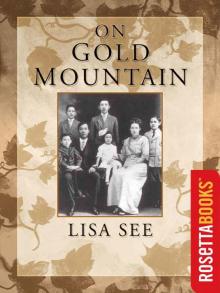 On Gold Mountain
On Gold Mountain